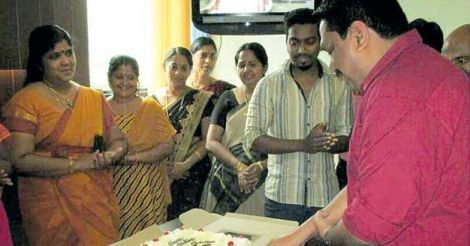Celebrating birthdays of employees is one of the several activities conducted by organizations in order to strengthen internal public relations and catalyze team building. These days, it has become a common practice in offices to celebrate birthdays of staffers. Such efforts increase organizational productivity by increasing communication among employees. And these practices, though inexpensive in terms of the money outgo of an organization, offer high returns by contributing to employees’ work-life balance and keeping them relaxed and alert. Till a few years back, such activities were confined to the corporate sector. These days, they are practiced in almost all offices – government or non-government; national or international.
The primary responsibility for conducting such team-building exercises is usually vested with the corporate communication unit or public relations division of an organization. In organizations where these units do not exist, such activities are conducted by staff-welfare committees or even by a group of employees who are interested in and committed to such social events. They collect birthdays of all the staff, irrespective of hierarchy, and prepare a yearly plan for birthday celebrations. As most people know, cutting a cake, presenting a gift to the ‘birthday baby’, applying pastry on the ‘baby’s’ face, taking photos and selfies, and posting them on the walls of personal and official social network pages... these are some of the common things done while celebrating a colleague’s birthday.
Tomin Thachankary, IPS and Kerala’s transport commissioner, while taking part in a television news discussion the other day, relied heavily on the theoretical aspects of this part of organizational public relations (PR) to defend the celebration of his birthday not only in his office, but also in other branches of his department. He had also met the public and distributed sweets to them on his birthday, in effect, mixing the ongoing public awareness campaign initiated by his department to promote the use of helmets with the celebration of essentially a private occasion the vast majority of the people of the state would have no interest in. He even asked the television anchor whether such celebrations are not held in the latter’s organization? Thachankary went to the extent of informing viewers that he was trained on these PR strategies and tactics in the United States, and celebrating birthdays is very common in offices these days.
Well, Thachankary has got his theory right. But then, no one was trying to understand PR theory from the commissioner here. Was the transport commissioner on equally strong ground while translating the theory he picked up from the Yanks when putting it to practice in his department and on the vehicle-owners in Kerala? That is the key question here, and to know that all we need to do is administer a simple check-list:
1) Did his department collect the dates of birth of all staff for this particular initiative; was an yearly plan drawn up for the purpose, or is this a one-off activity conducted only for the commissioner’s birthday?
2) Are all the employees in the transport department aware that their birthdays are going to be celebrated from this year?
3) Who is coordinating this team-building exercise?
4) Most important, were any other birthdays of employees of the transport department celebrated before or after the commissioner’s very public birthday celebration – this is the yardstick that will get us a sense of how effectively the commissioner has put the theory he picked up from the United States into practice.
Theoretically, though not mentioned by Thachankary, each organization deals with a different type of public. And these come under two main categories: external public and internal public. The University of North Carolina at Pembroke states that internal and external publics are components of public relations. Internal publics are individuals employed by an agency (organization), while external publics are people and organizations outside of the company that are doing business with an agency (organization).
Which means that, celebrating the birthday of an employee is not wrong; but celebrating the birthday of a single employee may harm the sentiments of internal public. The commissioner, despite the theoretical underpinning of his own defense, has been silent on this crucial aspect. And he was not asked that, probably the most important, question.
Moreover, birthday celebrations of staff are activities solely related to the internal public. Thachankary has himself defied the theories he held by taking his birthday celebrations from the internal public to the external public. And that, during a public communication campaign initiated by his own department to promote the use of helmets while buying petrol in the state!
Clearly, the transport commissioner has not read the PR theory fully while doing his training in the United States. Otherwise, he would not have tried to implement such PR strategies without taking into account the socio-cultural context of Kerala.
He has also missed, or ignored, another important learning that he should have picked up during his public relations training in the United States: the thin red line between public relations and narcissism.
(The author is a Delhi-based practising public relations professional. The views expressed are personal)

























